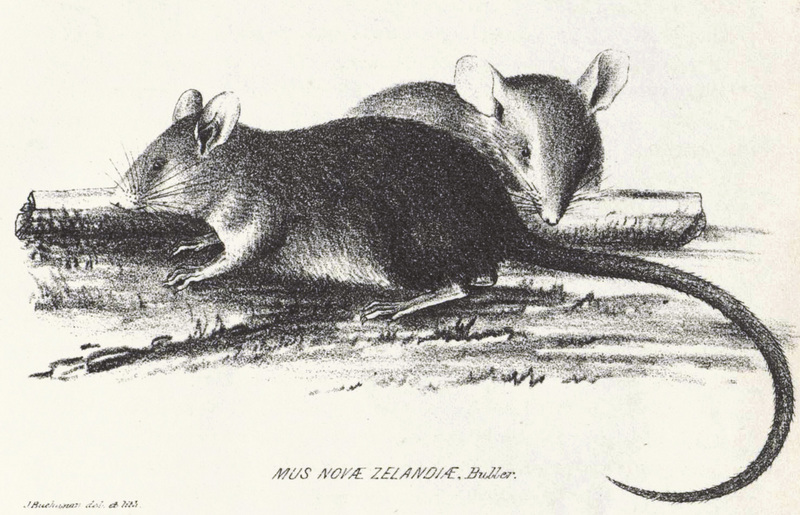|
| Query: brown spider | Result: 72nd of 137 | |
Polynesian Rat, or Pacific Rat (Rattus exulans) - Wiki
| Subject: | Polynesian Rat, or Pacific Rat (Rattus exulans) - Wiki
| |

| Resolution: 1478x951
File Size: 424109 Bytes
Date: 2007:02:10 15:52:46
Upload Date: 2007:12:11 15:00:20
|
Polynesian Rat
From Wikipedia, the free encyclopedia
Order: Rodentia
Family: Muridae
Subfamily: Murinae
[Photo] Illustration of Polynesian Rat, Rattus exulans from an article entitled 'On the New Zealand Rat. (With Illustrations.)', by Walter Buller, Transactions and Proceedings of the Royal Society of New Zealand, Volume 3, 1870, between pages 2 & 3. The Polynesian or Pacific Rat is known in New Zealand and other parts of Polynesia by the Polynesian word kiore. Source: Transactions and Proceedings of the Royal Society of New Zealand 1868-1961, Volume 3, 1870, (URL http://rsnz.natlib.govt.nz/volume/rsnz_03/rsnz_03_00_002110.html). The present version has been cropped and levels-adjusted by the uploader. Date 1870. Author: Walter Buller.
The Polynesian Rat, or Pacific Rat (Rattus exulans), known to the M??ori as kiore, is the third most widespread species of rat in the world behind the Brown Rat and Black Rat. The Polynesian Rat originates in Southeast Asia but, like its cousins, has become well traveled - infiltrating most Polynesian islands, New Zealand, Fiji, and even Hawaii. It shares the ability to easily adapt to many different types of environments, from grasslands to forests. Its habits are also similar, becoming closely associated with humans because of the easy access to food. As a result it has become a major pest in almost all areas within its distribution.
Characteristics
Polynesian Rats are nocturnal like most rodents, and are adept climbers, often nesting in trees. In winter, when food is scarce, it is common for them to strip bark for consumption and satisfy themselves with plant stems. They have common rat characteristics regarding reproduction; polyestrous with gestations of 21-24 days, litter size affected by food and other resources (6-11 pups), weaning takes around another month at 28 days. Diverging only in the fact that they do not breed year round, instead restricting it to spring and summer.
Physical features
The Polynesian Rat is similar in appearance to other rats like the Black and Brown Rats. It has large round ears, a pointed snout, black/brown hair with a lighter belly, but comparatively small feet. They have thin, long bodies, reaching up to 6 inches (15 cm) in length from the nose to the base of the tail, making them slightly smaller than other human-associative rats. Where they exist on smaller islands they tend to be smaller still (e.g. 4.5 inches (11 cm)). They are commonly distinguished by a dark upper edge of the hind foot near the ankle. The rest of their foot is pale.
Diet
Rattus exulans is a nocturnal and omnivorous species: eating seeds, fruit, leaves, bark, insects, earthworms, spiders, lizards, avian eggs and hatchlings. Polynesian Rats have been observed to often take pieces of food back to a safe place in order to properly shell a seed or otherwise prepare certain foods. This not only protects them from predators but also from rain and other rats. These "husking stations" are often found among trees, near the roots, in fissures of the trunk, and even in the top branches. In New Zealand, for instance, such stations are found under rock piles and fronds shed by Nikau palms.
Ecology
The Polynesian Rat is widespread throughout the Pacific and South-east Asia. They cannot swim over long distances and are therefore considered to be a significant marker of the human migrations across the Pacific, as the Polynesians accidentally or deliberately introduced them to the islands they settled. The species has been implicated in many of the extinctions that occurred in the Pacific amongst the native birds and insects; these species had evolved in the absence of mammals and were unable to cope with the predation pressure posed by the rats. It has also been suggested that the rats played a role in the complete deforestation of Easter Island by eating the nuts of the local palm tree, and thus preventing regrowth of the forest.
Remains of the Polynesian Rat have been dated to over 2000 years old in New Zealand with a number of dating methods but the figure is in dispute. It is suggested that they came with early explorers who subsequently perished or left without colonising the islands.
http://en.wikipedia.org/wiki/Polynesian_Rat
| The text in this page is based on the copyrighted Wikipedia article shown in above URL. It is used under the GNU Free Documentation License. You may redistribute it, verbatim or modified, providing that you comply with the terms of the GFDL. |
|
^o^
Animal Pictures Archive for smart phones
^o^
|
|

